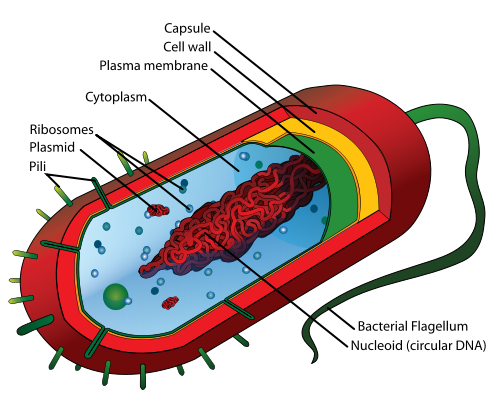1.1: Eukaryote cells
- Page ID
- 47194
Plants have eukaryote cells. Compared to prokaryote cells, plant cells are larger and they have organelles. They have their DNA contained in a nucleus and photosynthesis occurs in chloroplasts. Like plant cells, animal cells are also eukaryote cells. Unlike animal cells, plant cells have a cell wall. The cell wall is made of cellulose but may be thickened and strengthened in some cells.

A eukaryotic plant cell differs considerably from a prokaryotic cell of a bacteria or archaea. These are much simpler and smaller. Their DNA is found in a single chromosome and is not bound by a membrane. Similarly photosynthetic cyanobacteria do not have chloroplasts but rather photosynthesis occurs within the general cavity of the cell.



